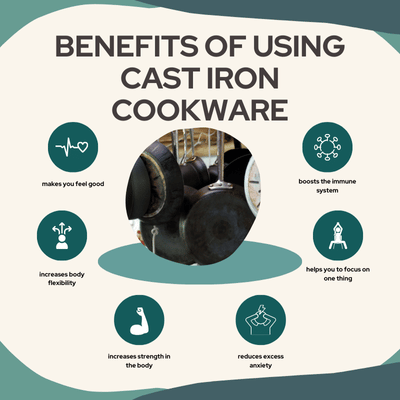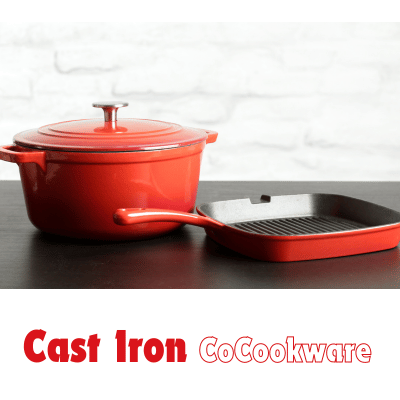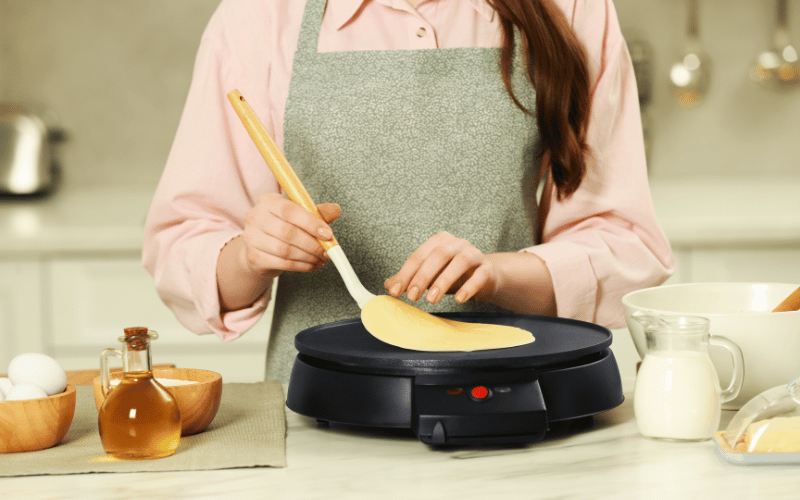In recent years, cast iron cookware has made a remarkable comeback in modern kitchens, earning a spot among today’s most valued culinary tools. As people become more conscious of their health and environmental impact, there’s a growing awareness of traditional cookware’s benefits. Though often seen as old-fashioned, cast iron provides a natural, non-toxic alternative to chemically-coated non-stick pans. It enhances flavor and cooking results, and its durability and sustainability make it an excellent long-term investment. Surprisingly, this time-tested material delivers advantages that go far beyond its rustic charm.
Health Benefits of Using Cast Iron Cookware
Naturally Non-Toxic
Unlike modern non-stick pans that can release harmful chemicals when overheated or scratched, cast iron cookware is completely free from synthetic coatings. Made from a single piece of metal, cast iron is a naturally non-toxic option, offering peace of mind when preparing meals. With no risk of harmful fumes or chemical leaching, it ensures that your food stays pure and chemical-free.
Adds Iron to Your Diet
One of the unique benefits of cooking with cast iron is its ability to add trace amounts of iron to your food. This can be particularly beneficial for individuals with iron deficiencies, as it provides a simple and natural way to boost daily iron intake. Foods high in acidity, like tomatoes, are especially effective at absorbing iron from the pan, making cast iron a great choice for nutritionally balanced cooking.

No Risk of Chemical Leaching
Over time, non-stick coatings can degrade, causing chemicals to seep into your food. Cast iron, however, remains stable and reliable, never breaking down or leaching chemicals, even with years of use. This makes it an excellent long-term, health-conscious choice for any kitchen.
Durability and Longevity
Built to Last: With proper care, cast iron cookware can last for decades, often being passed down through generations. Its rugged construction makes it highly resistant to warping, cracking, or wearing down, even under high-heat conditions. Unlike other cookware materials that degrade over time, cast iron maintains its structural integrity, offering a timeless kitchen tool that can endure heavy, daily use.
Low Maintenance: Despite common misconceptions, cast iron is relatively low maintenance. The key is seasoning – applying a thin layer of oil that bonds to the surface during cooking. Over time, this process naturally enhances the pan’s non-stick properties, making it easier to cook with and clean. Rather than being a hassle, seasoning improves the pan’s performance the more you use it.
Cost-Effective Investment: While non-stick pans may need replacing every few years due to wear and tear, cast iron’s incredible durability makes it a one-time purchase that can last a lifetime. This longevity not only reduces kitchen waste but also saves money in the long run, as you won’t need to continually replace cookware. Investing in cast iron is a smart, cost-effective choice for any home chef.
Cast Iron Cookware: Versatility in Cooking

Multi-Use in the Kitchen
Cast iron cookware is incredibly versatile, making it an essential tool for any kitchen. It can seamlessly transition from stovetop to oven, grill, or even campfire, offering endless possibilities for meal preparation. Whether you’re searing meats, frying eggs, baking bread, or even slow-cooking stews, cast iron performs well across a wide range of cooking techniques, making it suitable for everything from daily meals to gourmet dishes.
Even Heat Distribution
One of the standout features of cast iron cookware is its ability to retain and distribute heat evenly. This ensures that food cooks consistently, reducing the chances of hot spots and uneven cooking. The even heat distribution allows for better browning, caramelization, and overall texture in your dishes, whether you’re cooking at low or high temperatures.
Perfect for High-Heat Cooking
Cast iron’s tolerance for high heat makes it ideal for cooking techniques that require intense temperatures, such as searing, frying, or baking. Unlike other cookware that may warp or become damaged under extreme heat, cast iron thrives in these conditions, making it perfect for achieving a beautifully crisp crust on meats or a well-baked loaf of bread.
Improves with Age
Over time, cast iron cookware develops a natural non-stick layer, known as seasoning, which enhances its cooking performance. The more you use it, the better it gets, as the seasoning builds up and smooths the surface. This self-improving quality makes cast iron a rare piece of cookware that becomes more effective and easier to use with age.
Environmental Sustainability
Eco-Friendly Option: One of the key environmental benefits of using cast iron cookware is its longevity. Unlike non-stick or aluminum pans that may need replacing every few years, cast iron can last a lifetime with proper care. This one-time purchase reduces the need for frequent replacements, making it a more sustainable choice. By choosing cast iron, you’re minimizing the environmental impact of continuous manufacturing and disposal of less durable cookware.
Less Waste: Cast iron’s incredible durability translates into less waste. Since it doesn’t wear out or degrade over time, you won’t be contributing to the growing issue of discarded cookware ending up in landfills. Its long life cycle reduces waste generation, making cast iron a more responsible option for those looking to lower their household’s environmental footprint.
Sustainable Manufacturing Process: Many cast iron brands are committed to eco-friendly manufacturing practices, often utilizing recycled materials in the production process. By repurposing scrap metals and focusing on sustainable methods, these brands reduce the need for raw material extraction, lowering their overall environmental impact. This makes cast iron not only durable but also an environmentally responsible choice from production to everyday use.
Cultural and Historical Significance
Timeless Tool
Cast iron cookware has been a staple in kitchens around the world for centuries, prized for its durability and versatility. From ancient China to Europe and America, cast iron has been used in various forms to prepare meals over open fires, hearths, and stoves. Its history spans cultures and generations, making it a timeless tool that has stood the test of time, evolving from an essential piece of survival equipment to a cherished kitchen item.
Passed Down Through Generations
For many families, cast iron pans are heirlooms, passed down through generations. These well-loved pieces not only represent a practical tool for cooking but also carry sentimental value. Stories of grandparents using the same pans to prepare meals for their families add a personal touch, highlighting the longevity and emotional connection tied to makes an Idea about the Benefits of Using Cast Iron Cookware. The ability to hand down a cast iron skillet that continues to perform beautifully reinforces its reputation as a product built to last.
A Kitchen Tradition Reborn
As more home cooks seek durable, healthy, and eco-friendly options, cast iron is enjoying a resurgence in modern kitchens. This renewed interest can be seen as a revival of a time-honored culinary tradition, blending the past with the present. While technology has advanced, the benefits of cast iron remain unmatched, and its re-emergence signals a return to simpler, more sustainable cooking practices that have been cherished for centuries.
Simple Care and Maintenance Tips
Easy Cleaning Process
Contrary to popular belief, cast iron is quite easy to clean. To preserve the seasoning, avoid using soap, which can strip away the protective layer. Instead, after cooking, simply rinse the pan with hot water and use a stiff brush or scraper to remove any food residue. For tougher bits, boil water in the pan to loosen them. Dry the pan immediately to prevent rusting, and apply a light coat of oil to keep it in top shape.
How to Properly Season Your Cast Iron Pan
Seasoning your cast iron is key to enhancing its non-stick properties and preventing rust. Here’s a simple step-by-step guide:
- Preheat your oven to 400°F (200°C).
- Clean the pan thoroughly and dry it completely.
- Apply a thin layer of vegetable oil (or another high smoke point oil) to the entire surface of the pan, including the handle and bottom.
- Place the pan upside down in the oven with a foil-lined baking sheet beneath it to catch drips.
- Bake for about an hour, then let the pan cool completely in the oven before storing.
Storing and Preserving Your Cast Iron
Proper storage helps prevent rust and prolongs the life of your cast iron. After cleaning and drying, always apply a light coat of oil to maintain the seasoning. Store the pan in a dry place, avoiding stacking it with other pots and pans unless you place a paper towel between them to protect the surface. If moisture is a concern, store the pan with a moisture absorber, like a paper towel or a small packet of silica gel, to prevent rust.
In summary, cast iron cookware offers numerous benefits, from promoting healthier cooking and unmatched versatility to being a durable, sustainable choice with rich cultural significance. Investing in a quality cast iron piece can elevate your kitchen experience and ensure long-lasting performance. Whether you’re searing meats or baking bread, cast iron has you covered. Ready to make the switch? Try a simple cast iron recipe today and share your favorite cooking experiences – your kitchen will never be the same!

Hey There, I’m Monica, Mom of two. This is my personal blog site. Here I write about Kitchen Tips Tricks, Recipes, and Review the products I use.
I hope you enjoy the article. Give me feedback on how I’m doing with my blog. I would appreciate it so much.
Have a great day! 🙂
[Follow me on Twitter]



